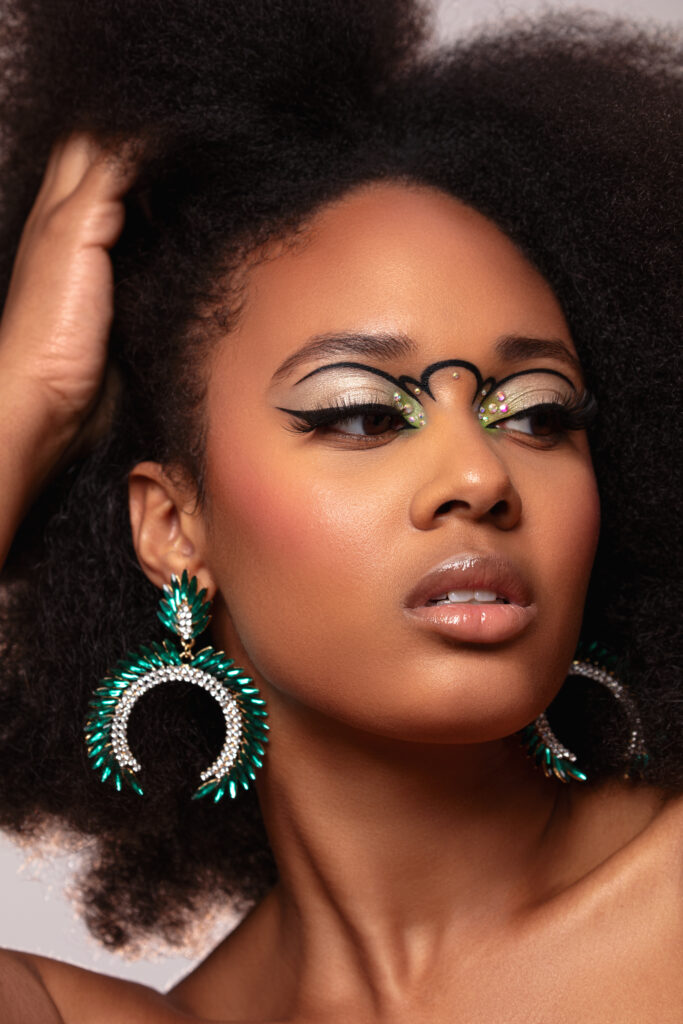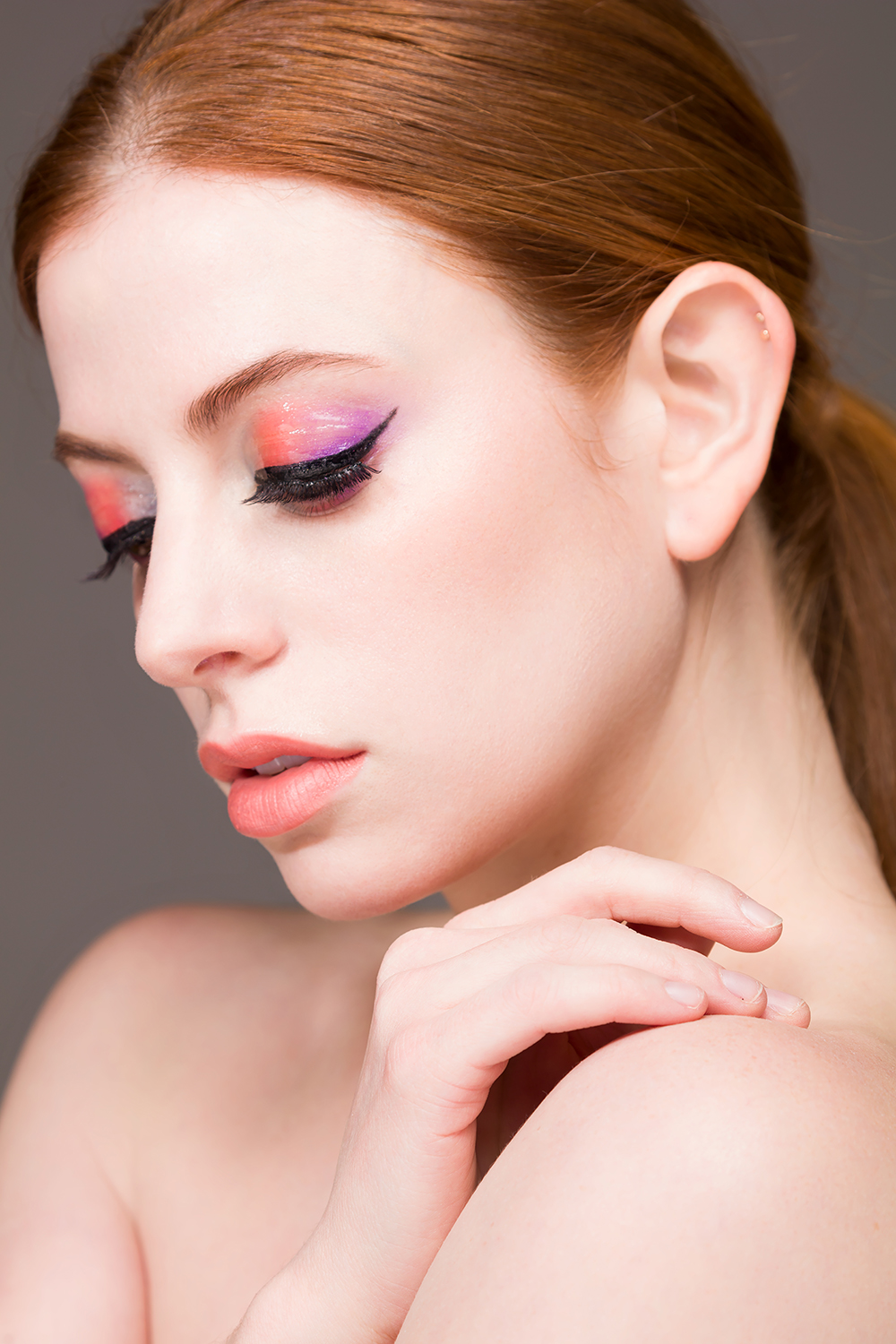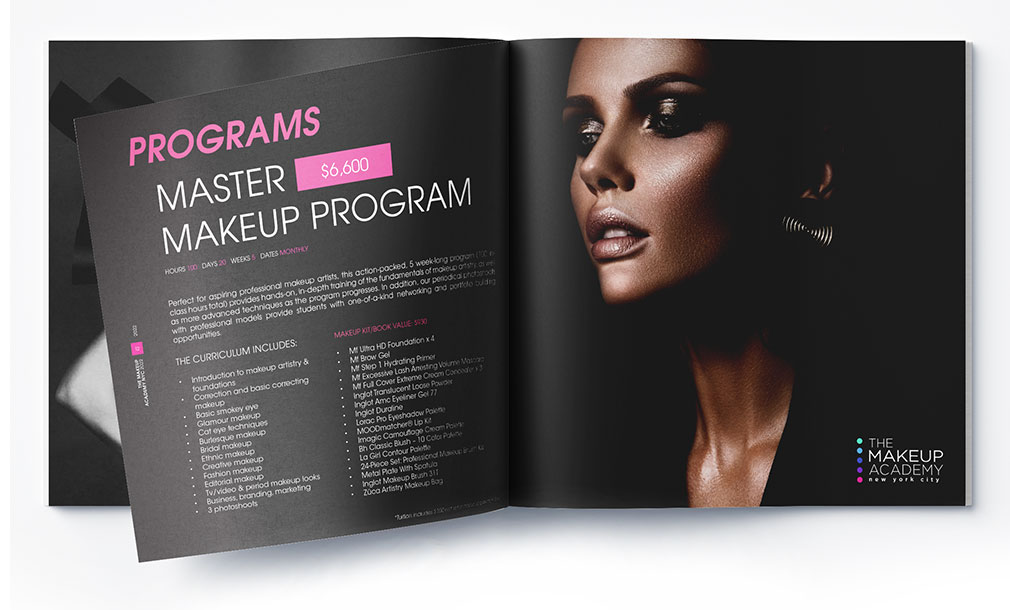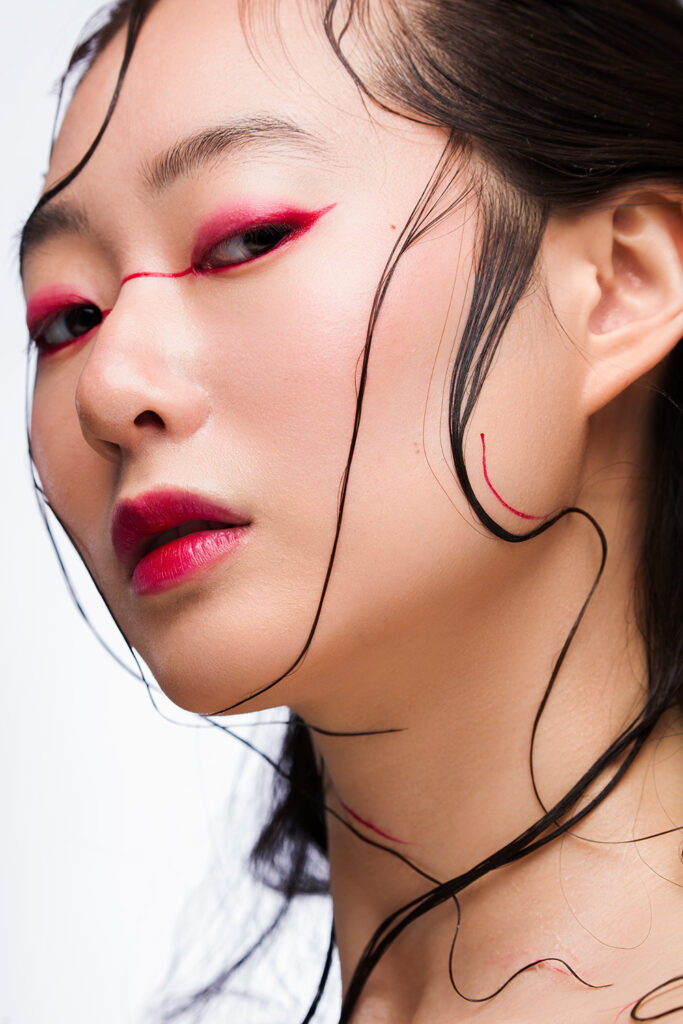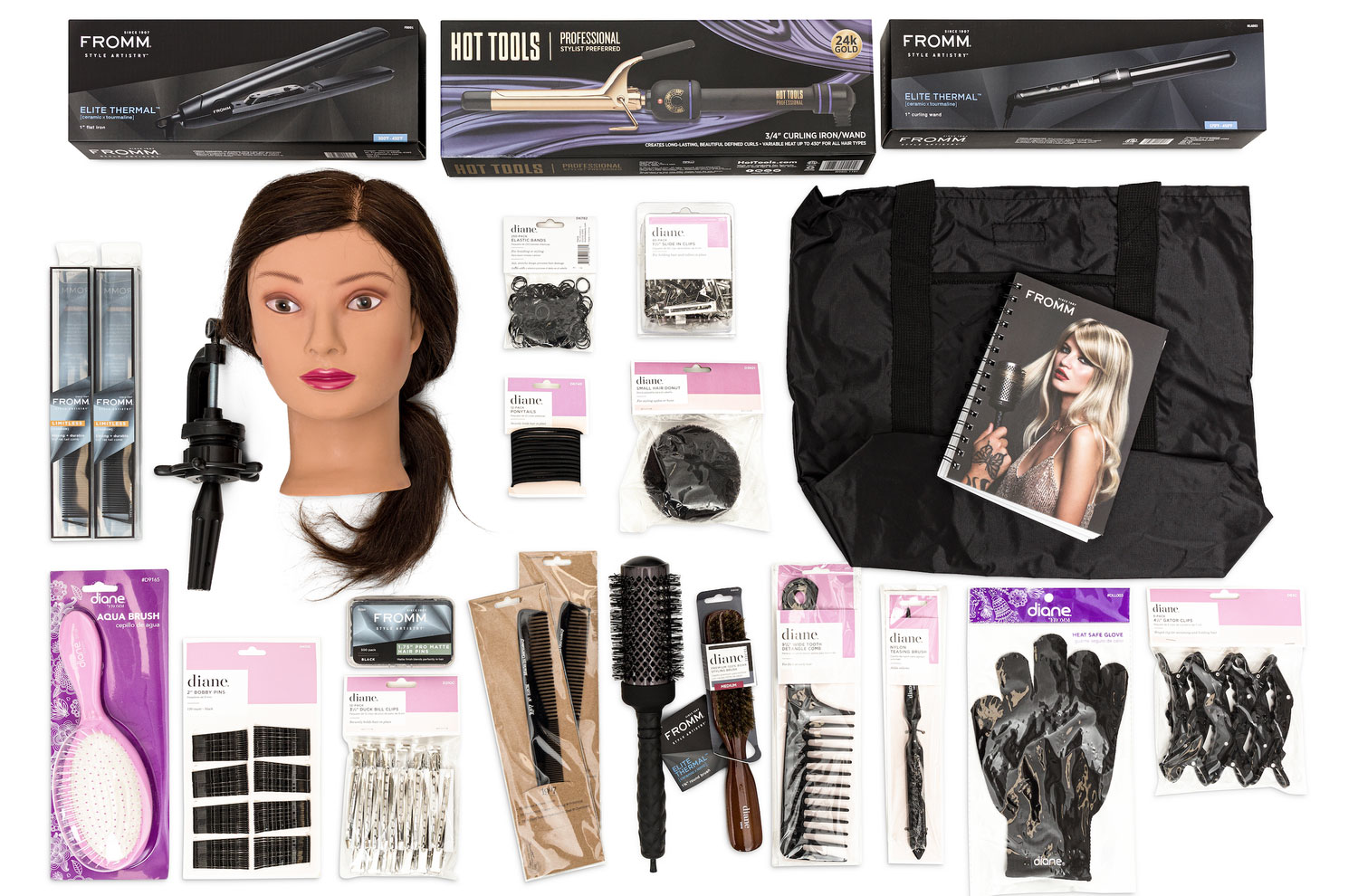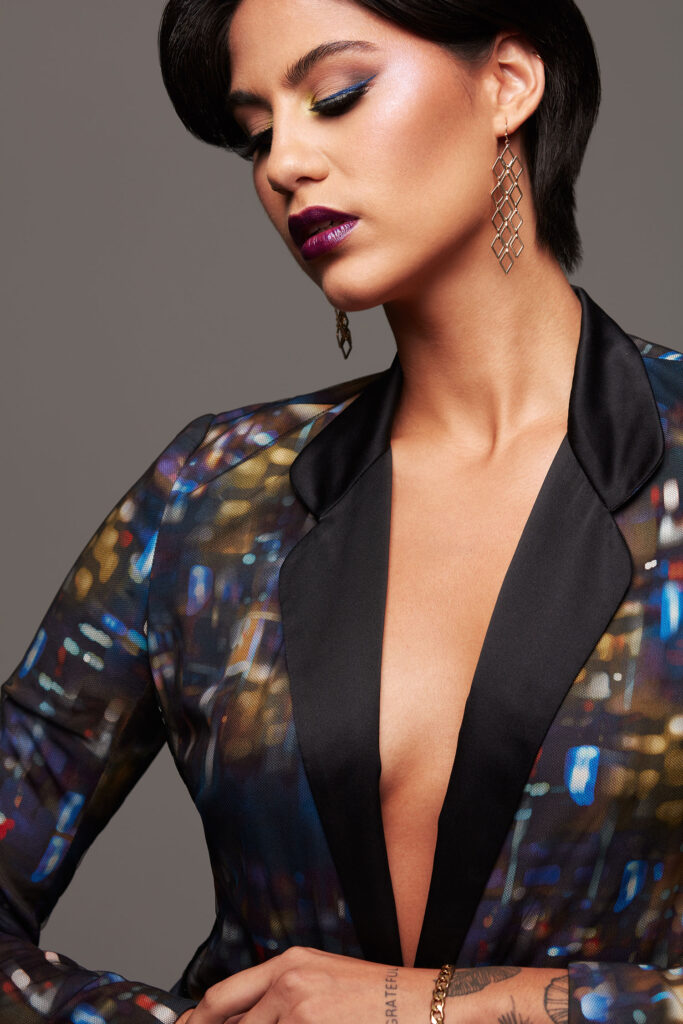Whether or not you realize it, you’ve been exposed to color theory since childhood. In elementary school, you were introduced to the color wheel, which shows how primary, secondary, and tertiary colors relate to each other. Perhaps, you even learned about analogous and complementary colors and warm vs. cool colors. Now that you’re interested in becoming a makeup artist, you need to learn a new theory: color theory for makeup. This concept is based on the color theory you know and love, but it shows how you can create unique and creative looks by mixing makeup colors.
Let’s take an in-depth look at why it’s essential for makeup artists to understand color theory for makeup.
What Is Makeup Color Theory?
Color theory is the art of mixing colors to create specific visual effects. The aim of mixing colors on the color wheel is to create harmonious color combinations that please the eye.
To truly understand color theory, you must know there are primary, secondary, and tertiary colors. The primary colors are red, yellow, and blue. When combined, you will get various shades of brown, depending on the proportion of each primary color used. Secondary colors are orange, green, and violet and are created when combining two primary colors. If you combine primary and secondary colors, you get a tertiary color. Tertiary colors include aquamarine, chartreuse, amber, vermillion, violet-red, and indigo.
In addition to teaching you about primary, secondary, and tertiary colors, color theory helps you understand how to create tones, shades, and tints by adding neutral colors (which include white, black, and gray). To achieve a specific tone, you will need to add gray to any given color. To create different shades, you will need to add black to the color. For tints, you will need to add white to make the color lighter.
How Does Color Theory Apply to Makeup?
Makeup artistry is rooted in color theory. The best professionals understand how specific colors should be used to match a client’s skin tone, disguise blemishes, highlight unique features, and more. With a firm grasp of color theory for makeup, you can create spectacular looks that wow clients, pop off the magazine page, and evoke certain emotions in audiences.
Foundation
An important aspect of makeup color theory is skin tones. As you know, skin colors can range from fair to dark. If this was all you needed to know to choose the right foundation shade for your client, anyone could be a makeup artist. However, there’s so much more to it. You must be able to recognize a skin’s undertone. When you can pinpoint whether your client has a cool (pink or rosy), warm (golden), or neutral (both pink and gold) undertone, you’ll be able to choose a foundation that looks natural and flattering. The proper base application is the mark of a true professional artist. Any makeup artist should be able to match the skin tone of any client sitting in their chair using just a small kit.
Contouring
Highlighting and shading are becoming all the rage in the beauty industry — and for good reason! These techniques bring out a client’s best features and add depth or disguise flaws. You must have a firm understanding of makeup color theory to accurately create the illusion of pronounced cheekbones, flawless undereyes, and sharp lines.
Color Correcting
Color correcting is a technique that will elevate your makeup applications! It will be your responsibility to create a flawless canvas each client will be satisfied with. For example, if your client has redness across their t-zone, you will know to use makeup products with a green undertone to minimize that redness, thanks to makeup color theory. If you don’t have an understanding of how the colors on the makeup color wheel blend together, you could end up making someone’s complexion less ideal.
Creating Special Effects
If you’re interested in expanding your makeup artistry skills beyond bridal makeup, you will likely need to know how to create special effects, such as injuries or fantastical looks. You can achieve these looks by being familiar with the makeup color wheel and contouring. For example, creating a red scar on your client’s cheek or transforming their face into a monster’s can be a breeze when you understand the basics of makeup color theory.
Combining Colors
Knowledge of color theory for makeup can also help you choose eyeshadow and lip colors for bold or subtle looks. The best color combinations are formed when considering complementary and harmonizing colors.
Complementary colors are colors that sit across from each other on the color wheel. For example, blue and orange are across from each other and are, therefore, complementary. When you use these colors together, you’ll create a striking makeup look.
Harmonizing colors are colors that have a primary color in common, such as blue-green, blue, and purple. These colors blend well together to create a look that is, well, harmonious.
Take Your Artistry Skills to the Next Level by Studying Color Theory for Makeup at The Makeup Academy
Are you jumping at the chance to learn more about color theory for makeup? We teach color theory on day 1 of our pro programs and continue to expand on the lessons throughout the classes. As a graduate, students will be able to match all skin tones and work with everyone as an artist. Come to our academy to expand your knowledge of makeup artistry. We offer a range of courses, including master makeup artistry and an extensive makeup program, to ensure you are prepared to meet the demands of the industry and let your creativity shine. Contact The Makeup Academy to register for classes today.


